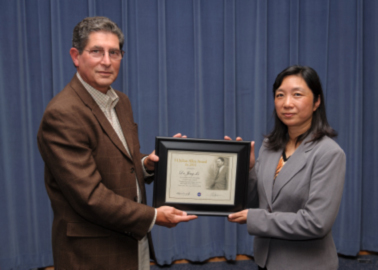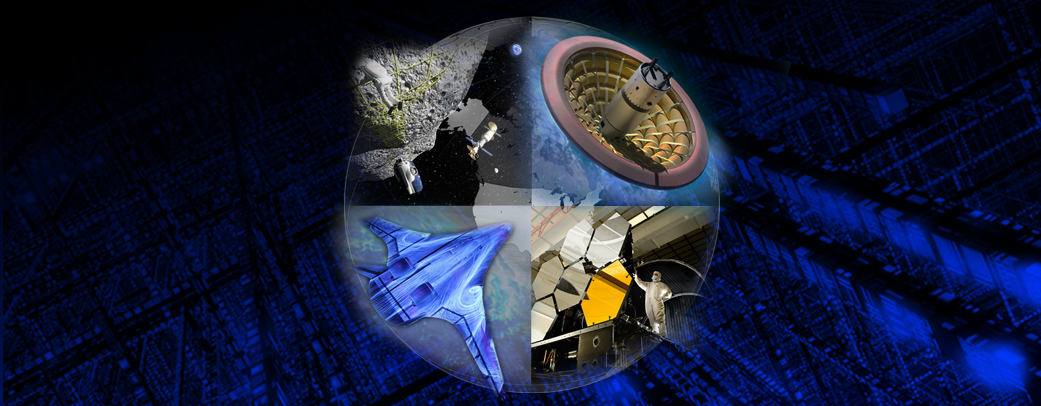2012 H. Julian Allen Award Winners – Jing Li and Meyya Meyyappan
Jing Li, Yijiang Lu, Qi Ye, Martin Cinke, Jie Han, and Meyya Meyyappan were awarded the 2012 H. Julian Allen Prize for their paper entitled “Carbon Nanotube Sensors for Gas and Organic Vapor Detection”, published in Nano Letters, Vol. 3, pp. 929-933 (2003
Abstract:
Nanotechnology offers the ability to work at the molecular level, atom by atom, to create large structures with fundamentally new molecular organization. It is essentially concerned with materials, devices, and systems whose structures and components exhibit novel and significantly improved physical, chemical and biological properties, phenomena, and process control due to their nanoscale size. A nanosensor technology has been developed at NASA Ames using nanostructure, single walled carbon nanotubes (SWNTs), combined with silicon-based microfabrication and a micromachining process. The nanosensors have achieved low detection limit of chemicals in the concentration range of ppm to ppb. More than 15 chemicals have been tested and differentiated. Due to large surfacearea, low surface energy barrier and high thermal and mechanical stability, nanostructured chemical sensors offer higher sensitivity, lower power consumption and a more robust solution than most state-of-the-art systems making them attractive for space and defense applications, as well as a variety of commercial applications. Leveraging the micromachining technology, the light weight and compact sensors can be fabricated, in wafer scale for mass production, with high yield and at low cost. An example of a sensor module, the first space flown nano device, will be introduced in this presentation. Such sensors have drawn attention from the space community for global weather monitoring, space exploration, life search in the universe, and launch pad fuel leak detection and in-flight cabin air and life support system monitoring, and engine operation monitoring. Additionally, the wireless capability of such sensors can be leveraged to network mobile and fixed-base detection and warning systems for civilian population centers, military bases and battlefields, as well as other high-value or high-risk assets and areas in industry.
Bio:
Jing Li received her Ph.D. in Materials Science and Engineering in 1996 from the University of Utah. She is currently a Principal Investigator in the NASA Ames TSS Branch, previous the Nanotechnology Branch. She leads the effort and has developed a first ever space qualified nanosensor unit for a flight demonstration ride on a satellite that was launched and operated successfully in 2007. The nanotechnology based chemical sensor platform that she developed has drawn interest from other NASA centers, other government agencies, and many industry partners. She is a principle investigator (PI) on the Nano ChemSensor Unit project, which won the 2007 NASA Ames Center Honor Award. She received a Nano 50 innovator award in 2008 and the NASA Honor Award, Exceptional Technology Achievement Medal, in 2011 Dr. Li is an internationally known expert in the field of chemical sensors. She has authored more than 45 peer review articles and has been awarded 9 US patents. Her research focus is on the chemical sensors development utilizing the nanostructured materials and a sensor array with signal processing techniques for making intelligent sensing systems.

































